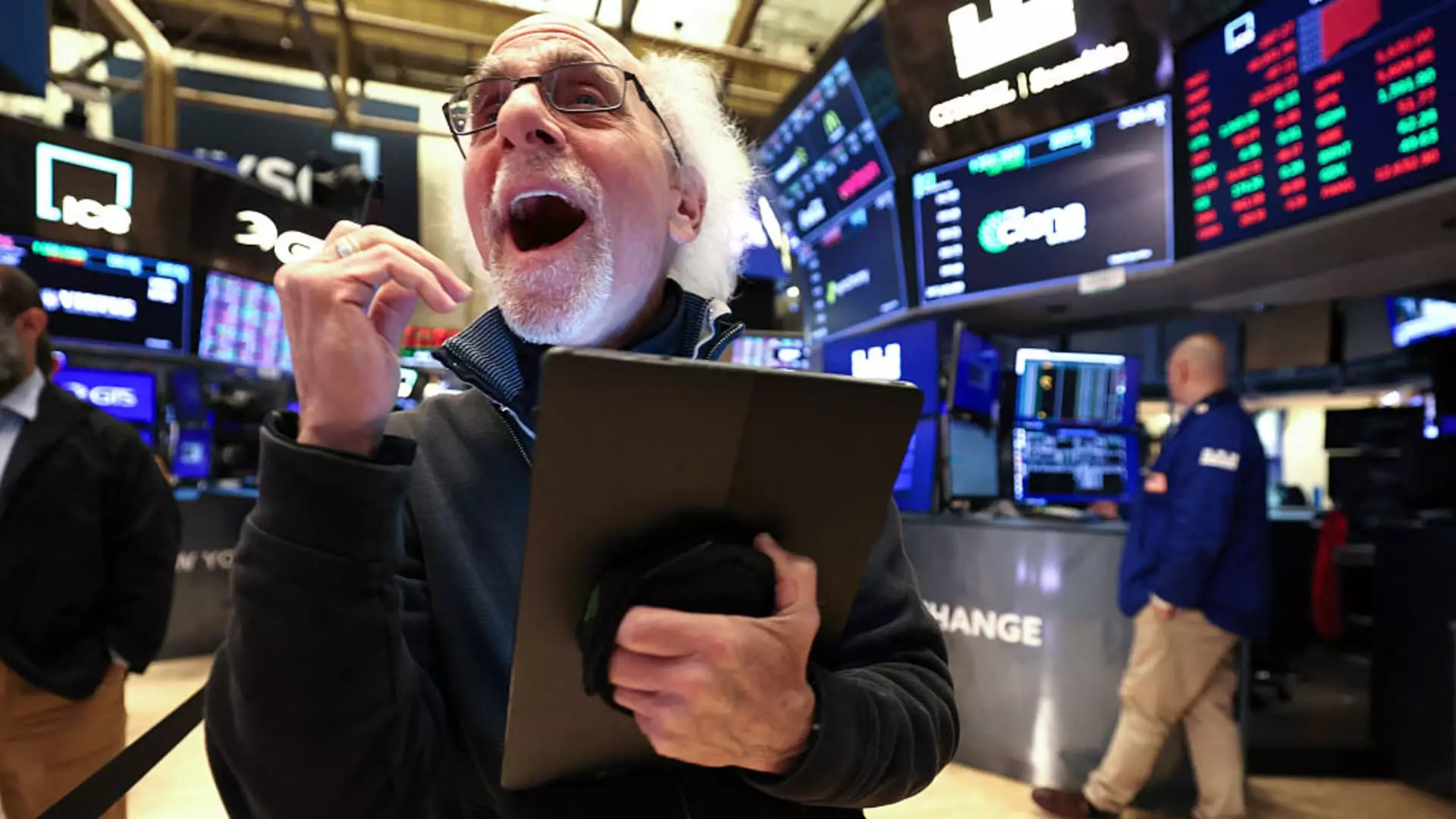The U.S. stock market’s recent climb to new heights is nothing short of astounding, especially given the volatile backdrop of 2025. The S&P 500 soared to a record 6,187.68, and the Nasdaq Composite smashed its prior ceiling, surging past 20,300. From an April nadir to these new peaks, the S&P alone has rallied nearly 24%, reversing early-year jitters that initially sent investors scrambling. While many pundits expected the market to buckle under the weight of trade tensions, Federal Reserve uncertainties, and geopolitical turmoil, the resilience displayed by equities has been striking. But the triumph isn’t just broad indices hitting fresh records; it’s a focused outperformance by select titans that embody the market’s most compelling trends.
The AI Juggernaut: Tech Titans Reign Supreme
At the heart of this bull run is an unwavering belief in the generative artificial intelligence (AI) revolution, a theme that buttresses many of the market’s largest winners. Initial fears that trade wars—or, more specifically, tariffs limiting semiconductor exports to China—would stifle innovation proved to be overblown. Investors have flocked to marquee names like Nvidia, whose shares have rocketed past $158, propelling the company to an astonishing $3.8 trillion market cap, briefly earning it the title of the world’s most valuable public firm.
Nvidia’s dominance is more than symbolic; it’s fundamental. The company’s chips are the backbone of modern AI applications, driving customer demand that outpaces even the bleakest projections. Moreover, strategic partnerships, including an 18,000-chip deal with Saudi Arabia’s AI startup Humain, underscore the global appetite for American technological prowess despite geopolitical headwinds.
Not far behind is Broadcom, another semiconductor powerhouse benefiting from robust chip demand as it hit new price records in the past month. But the AI narrative doesn’t end with chipmakers. Hyperscalers like Microsoft, with its cloud titan Azure, are cashing in on AI’s insatiable appetite for computing power and data infrastructure. Microsoft’s stock recently breached $499, reflecting investor confidence in its scalable, cloud-based AI services.
Even traditional industrial giants are pivoting cleverly to ride this wave. GE Vernova, through its energy turbines powering data centers, exemplifies how sectors once considered old economy now anchor AI’s digital transformation. Shares of GE Vernova have outpaced the broader market’s modest 5% gain with more than 60% appreciation, a testament to the evolving industrial landscape embracing technology.
Defense and Cybersecurity: Safety in an Uncertain World
Technology’s ascent dovetails with another market reality: investors seeking refuge amid geopolitical instability. Rising conflicts, especially in the Middle East, have prompted tangible fears about virtual and physical security. This environment has invigorated defense and cybersecurity equities, gifting them a renewed aura as “safe havens” within a turbulent global order.
CrowdStrike, a leader in cybersecurity, recently set new highs above $500 per share, highlighting the premium investors place on robust digital defenses. Peer companies like Palo Alto Networks remain close to their all-time peaks, propelled by enduring demand for protection against cyber intrusions—a risk that has become existential for governments and corporations alike.
This sector’s rise reflects a broader center-right liberal viewpoint emphasizing both strong national defense and the vital role private innovation plays in securing American interests. It’s a market endorsement of preparedness and resilience, reflecting concerns that transcend economic cycles and underscore the new security paradigm.
Economic Strength and Strategic Finance Fuel Momentum
Beyond tech’s glitter and defense’s security blanket lies a quietly strong U.S. economy performing better than many expected. Federal Reserve Chair Jerome Powell’s characterization of economic conditions as “still solid” signals a postponement of interest rate cuts, supporting a stable environment for corporate earnings and investor confidence. This stability matters: it underpins consumer spending, corporate planning, and financial markets’ appetite for risk.
A buoyant economy also revitalizes Wall Street’s traditional engines of growth, particularly investment banking. Goldman Sachs, riding a wave of high-profile IPOs like Chime and eToro, reached a record share price of nearly $700, embodying the renewed frenzy in capital markets. As companies seek public funding, banks with strong underwriting capabilities stand to profit handsomely.
For financial firms like Capital One, an economic backdrop that curbs consumer spending fears offers reassurance. Following its hefty $35 billion acquisition of Discover, Capital One registered fresh highs near $213 per share. Notably, its valuation still trails American Express, suggesting undervaluation—a mouthwatering opportunity for investors like Jim Cramer to recommend increased exposure.
In this market environment, considered risk-taking based on fundamentals—not reckless speculation—has paid off. It’s a reminder that even amid uncertainties, rational optimism grounded in economic strengths and technological leadership continues to yield gains.
Markets Reflect America’s Adaptive Spirit
What these trends collectively illustrate is a market that refuses to be cowed by disorder. Instead, U.S. equities reflect a flexible, forward-looking economy backed by innovation and practical resilience. Whether through AI chips driving the digital future, cybersecurity firms protecting vital assets, or financial all-stars navigating capital flows, this rally epitomizes why America’s capitalism, when tuned to technology and national security, remains formidable.
While the risks from global trade policies and geopolitical flare-ups linger, investors have chosen to focus on where real progress and profit potential lie. This mindset aligns with a fiscally responsible, market-conscious approach that prizes growth balanced with national strength—a blueprint for enduring success far beyond 2025.

